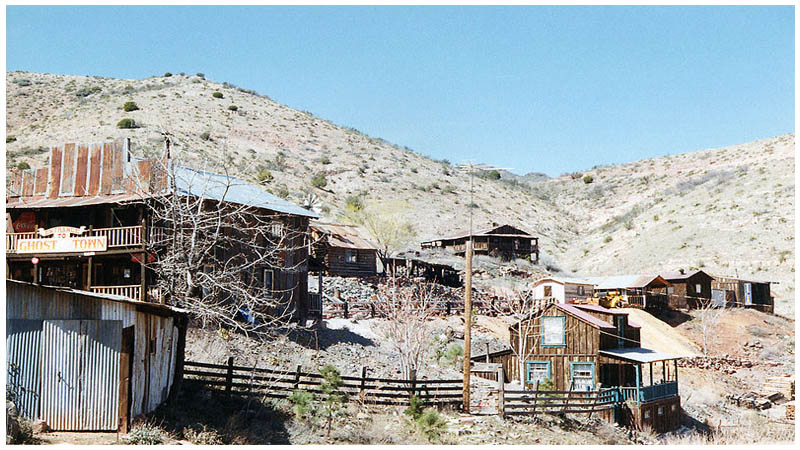In the Black Hills mountain range in Central Arizona, about 100 miles north of Phoenix, one can easily locate Jerome. It was founded in 1876, on top of Cleopatra Hill and looking across the Verde Valley. Today it is a town of barely 500 people, a far cry from its olden days when it was the fourth largest city in Arizona Territory.
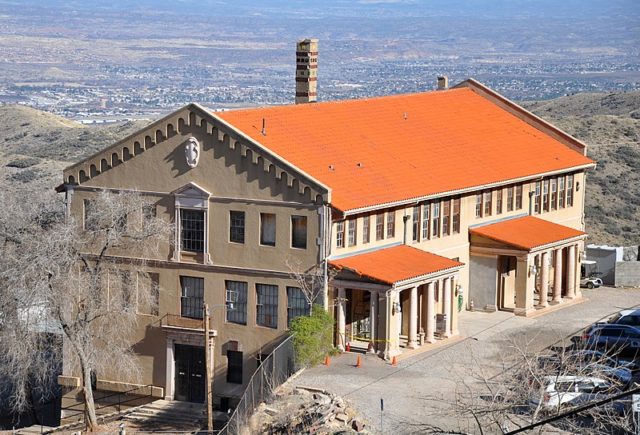
These lands were occupied since around 1125 B.C. by the prehistoric Hohokam culture, and later by the Yavapai tribe. According to some researchers, the Hohokam were the first to mine this area, in search of the colorful minerals azurite and malachite. When the Spanish came in 1582 they found that the native Yavapai people mined copper minerals to use as a dye.
The Spaniards had no interest in copper for they were after something more valuable: gold. So the Yavapai were left in peace until prospectors began to arrive in the area the mid-1800s.
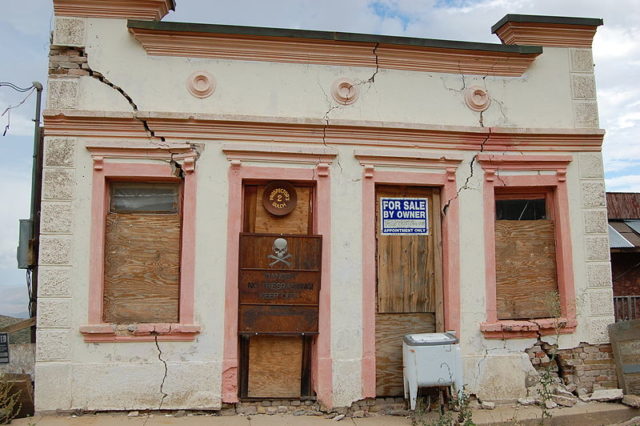
By the time Morris A. Ruffner and Angus McKinnon staked claims in 1876 at the location where the town of Jerome would later stand, most of the Yavapai had been corralled in the Camp Verde Reservation.
Ruffner and McKinnon’s claims were purchased in 1880 by Arizona’s governor, Frederick A. Tritle, and a mining engineer by the name of Frederick F. Thomas. Three years later, aided by investment from New York City financiers Eugene Jerome and James A. McDonald, they established the United Verde Copper Company. The growing town was named “Jerome” in honor of the new financial partner, who became Secretary of the mining company.
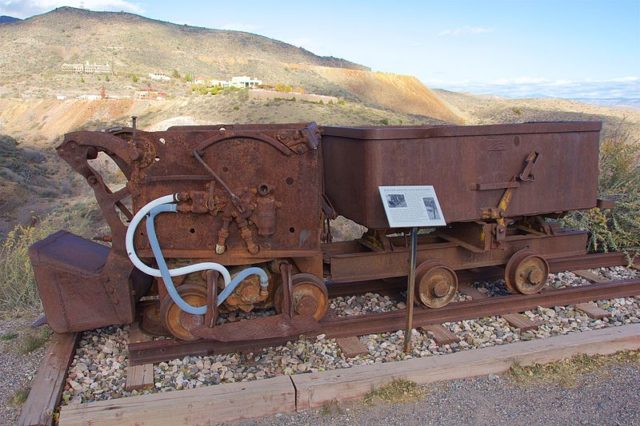
Later on, a smelter was erected at Jerome and from it, a wagon road stretched all the way to Ash Fork, to the depot of the Atlantic and Pacific Railroad. But this form of transport was uneconomical. And transport wasn’t the only problem that this company had to deal with.
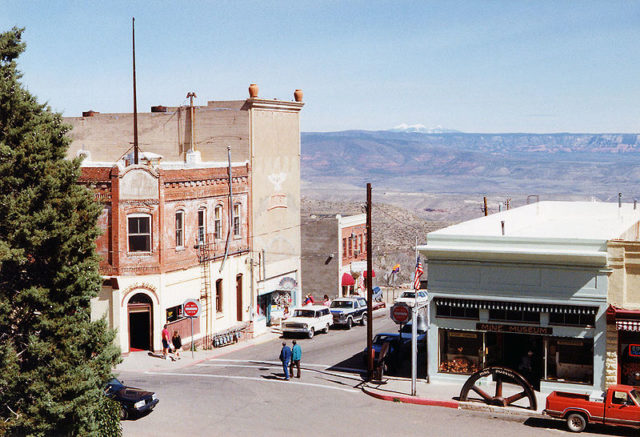
Unbeknownst to them, the price of copper would drop by half by the end of 1884. When that happened, the prosperity of the town was severely hit, and the mine was closed. However, many people chose to remain in Jerome and it struggled through the next few years. To the rescue came William A. Clark, a businessman who made his a wealth as an entrepreneur. He purchased the United Verde Copper Company in 1888.
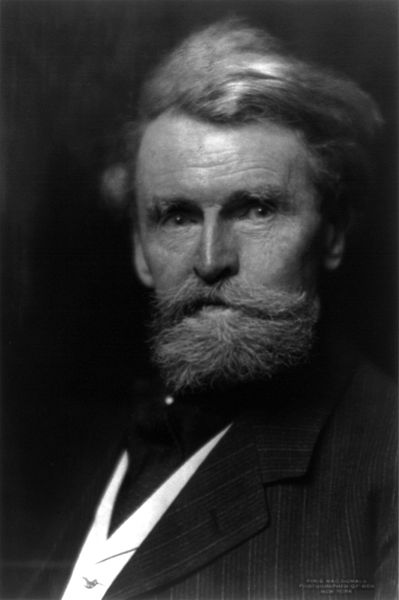
Among the first things that he did was to enlarge the smelter. Clark later formed the United Verde and Pacific Railway, a 3 foot narrow gauge railroad. The railroad stretched all the way to the town of Jerome Junction – itself now a ghost town. As the business grew, the town of Jerome did too, and in just ten years the population jumped from 250 to 2,500 people.
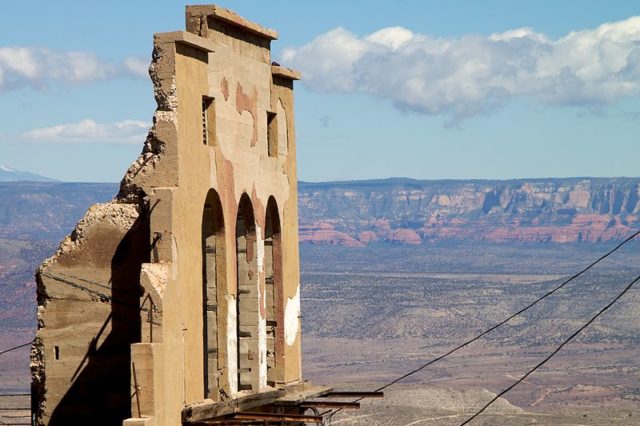
800 of its residents worked at the United Verde Copper Company, which was the leading producer of copper in all of Arizona Territory; truth be told the United Verde Copper Company owned the biggest mines in the world.
At the start of the 19th century, the town of Jerome had a number of brick buildings, churches, electric lights and even a telephone service. But almost 80% percent of its population was male and so the prostitution and gambling were one of the favorite activities in this place.
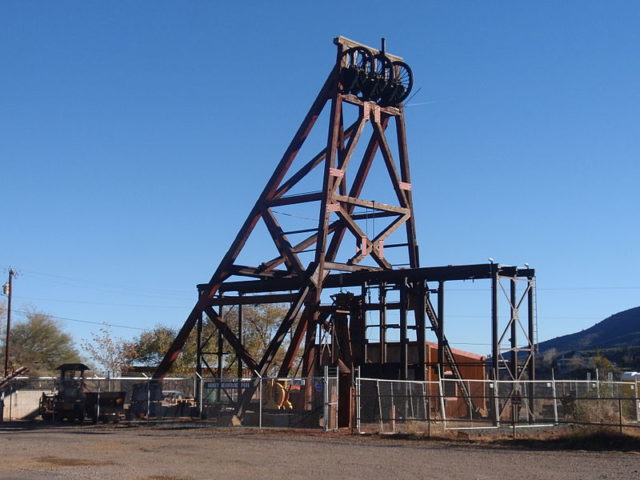
As the ore deposits became depleted, the people of Jerome started to leave this town and seek a better life elsewhere. At the middle of the 20th century, Jerome only counted 100 residents. The town was headed towards stupor.

Those that decided to stay in Jerome sought out different alternatives to save this town and tourism seemed like the most logical solution. For this reason, a number of art houses, restaurants and coffee shops were opened. To this very day, the town of Jerome remains alive thanks to its almost 500 residents who keep it that way.
